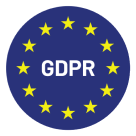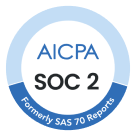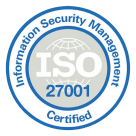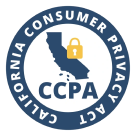11 Sales Tactics & Examples for SDR Teams in 2025

You and your SDR team are hustling, making calls, and sending emails, but something isn’t clicking. Conversion rates are stagnant, prospects ghost after the first touch, and reps are drowning in admin work.
Sound familiar? You’re not alone.
The average cold call conversion rate hovers around 2%.* But that doesn’t mean you also have to be stuck with low success rates.
With the right approach and tools, including AI-powered analytics, automated workflows, and CRM integrations, you can improve conversions and make your outbound calls more effective. You’ll be able to better target your calls, create more personalized outreach, and follow up at precisely the right moment.
In this article, we explore 11 innovative sales tactics designed to optimize SDR workflows, improve engagement, and increase conversion rates.
Key takeaways:
- AI-driven analytics and automation can dramatically improve SDR coaching strategies.
- Multi-channel engagement is crucial—layer calls with social media and email for better results.
- CloudTalk’s AI-powered tools, like call scoring and automated workflows, streamline outbound efforts and scale sales operations.
Implement AI and automation for better sales performance
1. Improve SDR Performance With AI-Powered Call Scoring
Some sales reps instinctively know when to ask the right questions and steer the conversation toward the next step, while others miss cues that show a prospect’s interest. AI-powered call scoring helps your team achieve greater consistency by analyzing conversations in real-time and assigning a call quality score to each interaction.
How’s that possible?
High-performing SDRs aren’t just lucky. They follow a pattern. AI helps identify these patterns by evaluating factors like tone, word choice, and customer sentiment. Salespeople receive instant feedback on their calls, making it easier to refine their approach.
Over time, this data-driven guidance helps reps:
- Develop more effective talk tracks
- Improve engagement
- Enhance objection handling
Plus, managers can pinpoint coaching opportunities with more accuracy, ensuring every rep reaches their full potential.
With CloudTalk’s AI-powered call scoring, managers can review call insights, coach SDRs based on real data, and optimize outreach for higher conversions.
That way, you can measure improvement over time and identify what separates successful calls from ineffective ones.
2. Use Auto-Dialers to Increase Call Efficiency
Manual dialing can lead to burnout and wasted time, especially when SDRs encounter unanswered calls, busy signals, or voicemail.
Auto-dialers eliminate these inefficiencies by automatically dialing numbers from a predefined list, ensuring reps spend more time talking to prospects instead of waiting between calls.
Predictive dialers take it a step further by using algorithms to adjust call pacing based on agent availability. This ensures a steady flow of conversations without overwhelming the team. They increase connection rates and reduce idle time, helping SDR teams maximize productivity and boost conversions.
How to use such a tool? Start by understanding the difference between an auto-dialer and a predictive dialer to determine which best suits your team’s workflows.
Then, integrate an advanced tool like CloudTalk’s auto-dialer for sales to automate outbound efforts and improve efficiency. Pairing your dialer with automated outbound calling strategies ensures SDRs connect with more prospects while maintaining a high-quality outreach approach.
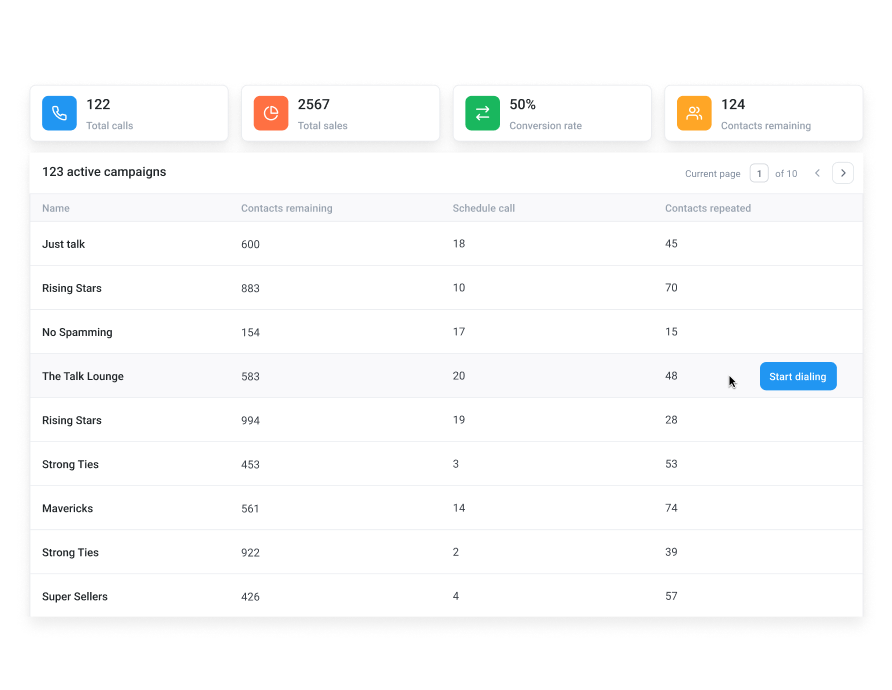
3. Personalize Outreach Beyond First Names
“Hey [First Name]” isn’t personalization. True personalization means tailoring outreach based on behavior, past interactions, and real-time sentiment analysis.
People respond to relevance, not generic messaging. Caller-based routing ensures that inbound leads connect with the most relevant rep, increasing the chances of a meaningful conversation.
Meanwhile, Sentiment Analysis helps sales teams gauge prospect reactions in real-time, so they can adjust their approach based on tone and emotional cues. This helps them:
- Build rapport faster
- Anticipate objections
- Adapt messaging to drive action
Together, these tools make conversations more relevant and improve conversion rates.
Pro Tip
Pro tip: Integrate your VoIP system with a CRM to consolidate customer data and personalize interactions at scale.
This ensures reps have context before every call, allowing them to tailor conversations based on previous engagements, preferences, and sentiment trends—leading to higher engagement and better conversion rates.
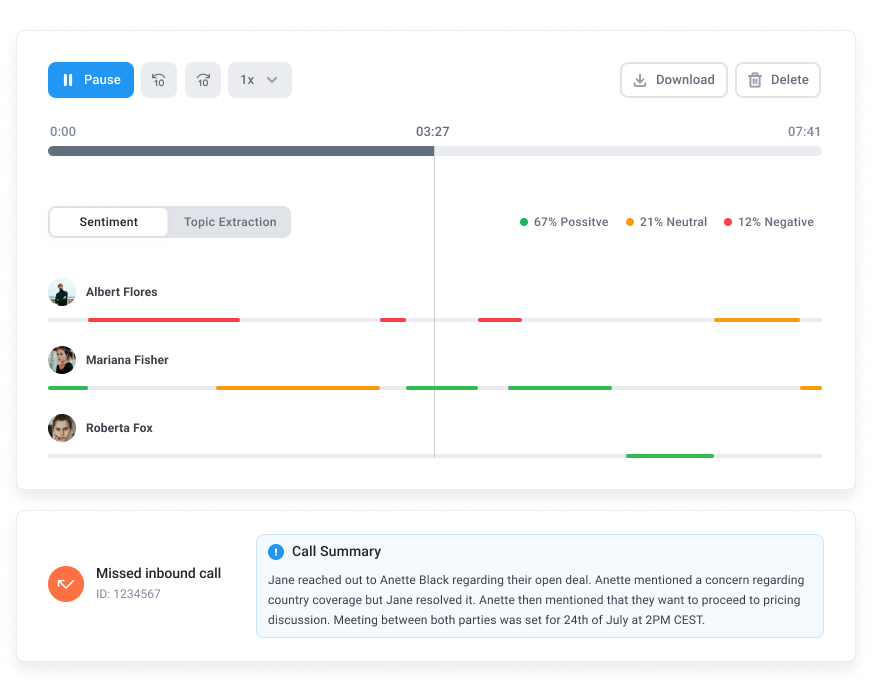
Learn more about Customer Sentiment Analysis to see how you can use AI to improve call quality and sales performance.
4. Layer Cold Calls With LinkedIn and Email Touches
Cold calling alone has limits—prospects may not pick up, forget the conversation, or lose interest without follow-ups.
A multi-channel approach increases engagement by reinforcing brand awareness and keeping your company top of mind.
Adding LinkedIn, emails, and voicemail drops ensures well-timed touchpoints that boost response rates while nurturing leads in a non-intrusive way.
How to implement this sales strategy:
- Use CloudTalk’s Click-to-Call to streamline outbound calls directly from your CRM or sales platform.
- When prospects don’t answer, leverage voicemail drops to leave pre-recorded messages that maintain consistent outreach while saving SDRs time.
- Integrate sales email software to automate personalized email sequences that reinforce call conversations and nurture leads.
The combination of calls, emails, and social media engagement helps you maximize outreach efficiency and improve conversion rates.
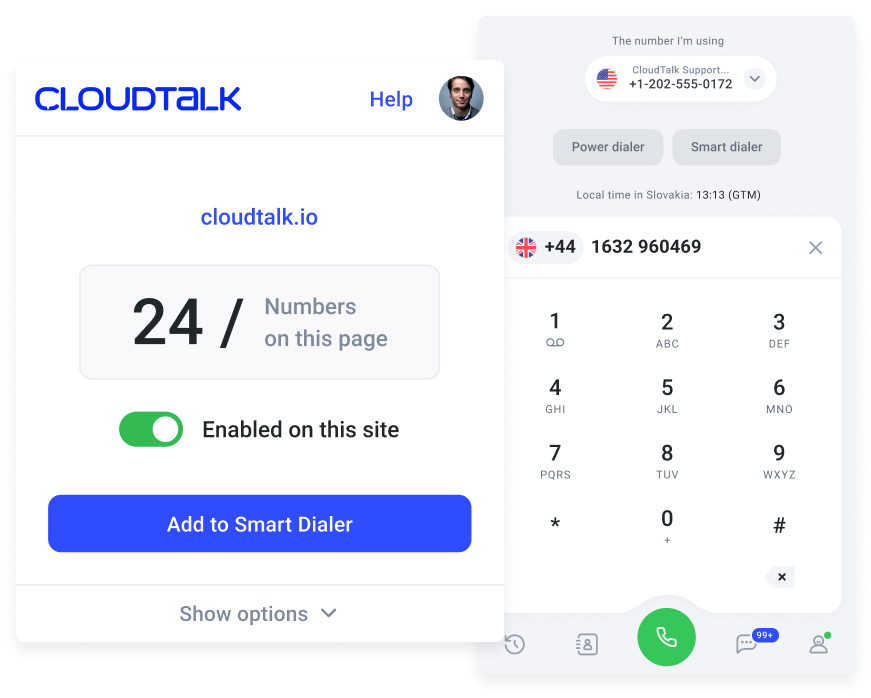
5. Leverage Call Recordings for Real-Time Coaching
Imagine listening to a sales call where the rep rushes through their pitch, missing a key buying signal. Instead of digging deeper, they move on too quickly—losing an opportunity to uncover the prospect’s real pain points.
Now, picture that same rep receiving real-time feedback. With targeted coaching, they learn to:
- Pause after key questions to allow the prospect to share more information.
- Use mirroring techniques to repeat part of the prospect’s statement, showing understanding and encouraging deeper conversation.
- Ask targeted follow-up questions to uncover challenges and personalize their pitch.
Data-driven coaching helps reps improve faster because feedback is based on actual conversations—not just generic training sessions.
Call recordings provide valuable insights into rep performance, making it easier to identify strengths, pinpoint areas for improvement, and tailor coaching plans to individual needs.
How to implement this strategy:
- Use sales coaching software to record and analyze calls.
- Create a structured sales coaching plan with regular call reviews, personalized feedback sessions, and ongoing skill development.
- Encourage SDRs to self-assess by reviewing their own calls and proactively making adjustments.
With a structured coaching approach, SDRs refine their messaging, improve objection handling, and close more deals.
6. Time Outreach Based on Engagement Data
When is the best time to cold call? Data holds the answer.
Reaching prospects at the right moment can be the difference between getting a response and being ignored. Studies show that certain times of day and specific days of the week yield higher answer rates, but the optimal window varies depending on industry, region, and prospect behavior.
Analyzing engagement data helps SDRs identify patterns in response times, optimizing outreach for higher contact rates. This not only increases connection rates but also prevents wasted effort on unresponsive leads, making outreach more efficient.
To make the most of engagement information, use call analytics and CRM data to determine the best times to reach different prospect segments.
Here’s how to do it:
- Use CloudTalk’s call analytics to track when prospects are most likely to answer.
- Leverage CRM and engagement data to sync call times with email and LinkedIn response patterns.
- Automate call scheduling so reps reach leads at peak engagement windows without guesswork.
7. Follow Up With Multi-Threading Techniques
Relying on a single contact within a company is risky because deals can stall or fall apart if that person leaves, loses interest, or lacks decision-making power.
Multi-threading—engaging multiple stakeholders within an organization—ensures SDRs establish relationships with key decision-makers across different departments, which increases your chances of closing a deal.
This increases visibility, builds trust within the company, and prevents sales cycles from stalling because of a single point of failure. Plus, engaging multiple contacts allows you to uncover different business pain points, making it easier to position a solution that resonates with the entire buying team.
To use this strategy, start by researching the company’s structure to identify relevant decision-makers beyond your initial contact. Use LinkedIn, CRM data, and sales intelligence tools to map out potential influencers and key stakeholders.
Once identified, personalize outreach to each contact based on their role and business priorities, ensuring messages apply to their specific needs.
8. Automate Post-Call Workflows to Reduce Admin Time
SDRs spend too much time logging calls and updating CRMs. Workflow automation eliminates these inefficiencies so that routine tasks happen instantly and accurately in the background.
With less administrative burden, SDRs can dedicate more time to high-impact activities such as prospecting, lead nurturing, and closing deals. These tools also minimize the risk of human error, helping you consistently record data and follow up at the right time, with minimal manual intervention.
Plus, workflow automation for small businesses with limited personnel and budget means you can:
- Streamline operations by reducing manual tasks and optimizing call flows
- Speed up response times with automated call routing and follow-ups
- Boost productivity by allowing SDRs to focus on high-value conversations instead of admin work
To make the most of this sales tactic, use workflow automation tools to handle post-call actions, such as:
- Logging call outcomes
- Updating contact records
- Triggering follow-up emails
- Scheduling the next touchpoint
By integrating your CRM and sales engagement tools with CloudTalk, you can eliminate manual data entry and keep your sales processes efficient and organized.
9. Use Sales Triggers to Reach Out at the Right Moment
Timing is everything in sales. Instead of cold calling at random, SDRs should prioritize leads showing real-time interest—like visiting your website, opening an email, or engaging with content.
These sales triggers indicate when a prospect is actively researching a solution, making outreach far more effective.
To use this strategy, you’ll first need to identify and track key sales triggers such as website visits, email engagement, content downloads, or changes in a prospect’s company.
Integrating real-time prospecting tools into your CRM helps SDRs act on these signals immediately, reaching out while the prospect is actively researching solutions.
By doing this with CloudTalk, you can:
- Track engagement signals by integrating website visits, email opens, and CRM data. Call Intelligence helps analyze these interactions to pinpoint high-intent leads.
- Automate call prioritization so reps reach out when interest is highest.
- Speed up response times by alerting SDRs the moment a lead takes action.
Companies using proven sales prospecting methods see higher response rates and stronger pipeline growth. For small businesses, the right sales software can automate this process, ensuring SDRs never miss an opportunity to connect with high-intent leads.
10. Optimize Call Scripts Based on Conversion Insights
A well-crafted sales call script gives SDRs the confidence to navigate conversations effectively while maintaining a natural and engaging tone. When you use scripts built using real call data and conversion insights, reps can predict objections and ask the right questions.
Instead of following a rigid, one-size-fits-all script, you can refine your messaging based on call recordings, AI-powered analytics, and past conversion data to create adaptable, high-performing talk tracks.
This approach ensures that every rep, regardless of experience, can execute productive calls that move prospects closer to a sale. It can also help you identify common customer needs and the ideal customer profile so that you can create the best-selling techniques for your team.
To achieve this:
- Analyze high-converting calls to identify key phrases, objections, and winning responses.
- Build flexible call scripts that guide SDRs while allowing room for personalization.
- Use CloudTalk’s AI-driven call analytics to review successful conversations and adjust scripts based on real conversion insights.
- Test and refine these sales call script templates to help reps navigate objections and get past gatekeepers.
With data-backed scripts, SDRs can have more meaningful conversations, overcome objections faster, and drive better results.
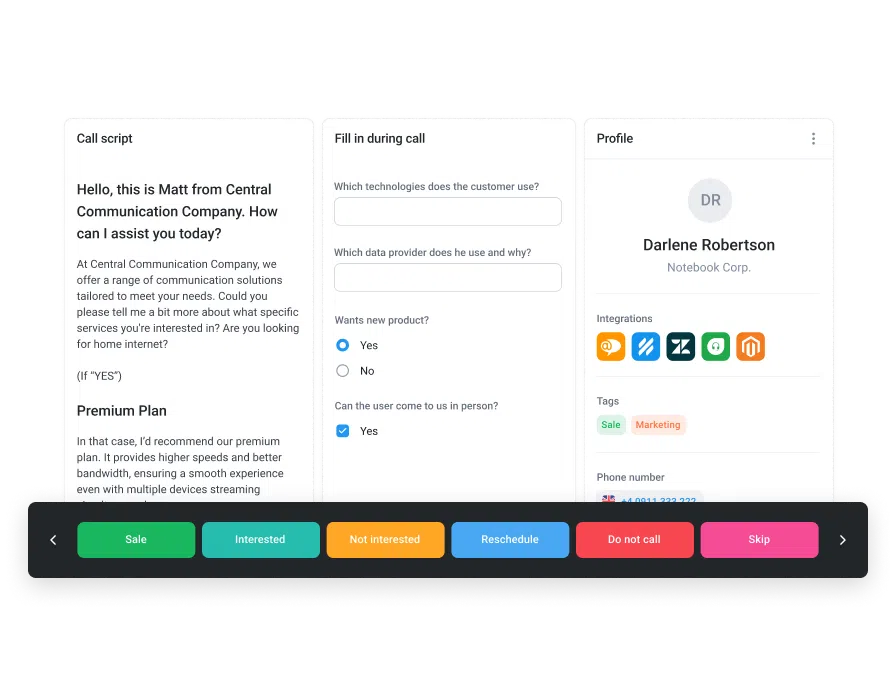
11. Connect CRM and Sales Tools for Real-Time Data Sync
Imagine this: A rep calls a prospect, only to realize mid-conversation that a colleague already reached out earlier that day. Worse, the prospect had already responded to an email with new information that the rep never saw.
The conversation feels disjointed, the prospect gets frustrated, and a potential deal slips away—all because the sales tools and CRM weren’t in sync.
Without real-time data sync, teams risk duplicating efforts, missing key follow-ups, and reaching out with outdated information.
To avoid this:
- Integrate your CRM with CloudTalk to ensure every call, note, and activity is updated instantly.
- Automatically log interactions and give reps a real-time view of prospect engagement.
- Incorporate data enrichment in sales to gain deeper insights into customer needs and tailor outreach accordingly.
When reps have instant access to up-to-date information, they can focus on selling instead of tracking down details—leading to more productive conversations and higher close rates.
Scale Your SDR Team With Smart Sales Tactics
Your team shouldn’t stay stuck in a cycle of manual tasks, unanswered calls, and missed opportunities. The frustration of stagnant conversion rates and ghosting prospects isn’t just a coincidence—it’s a sign that something needs to change.
By using these sales tactics, you can:
- Connect with the right prospects at the right time
- Personalize every touchpoint
- Spend more time selling rather than managing admin
- Reach your quotas
The difference between a struggling team and a high-performing one isn’t just effort—it’s strategy.
With the right tools and approach, including CloudTalk’s AI solutions, automated workflows, and advanced integrations, your SDRs can turn stalled conversations into closed deals.
Implement AI and automation for better sales performance
Sources:
https://www.close.com/blog/cold-calling-conversion-funnel-analytics
FAQs About Sales Tactics Examples
How Can SDR Teams Reduce No-Show Rates for Sales Calls?
Use CloudTalk’s caller-based routing and AI-driven insights to increase answer rates.
What’s the Best Way to Handle Objections During a Cold Call?
Follow a structured sales coaching plan to refine objection-handling techniques.
How Often Should SDRs Follow Up With Prospects Without Being Pushy?
The right follow-up time varies for each person and situation. Use multi-threading and sales prospecting triggers to find the best one.
What Metrics Should SDR Teams Track to Improve Sales Performance?
Monitor call quality scores, conversion rates, and engagement data.
How Can SDRs Identify the Right Decision-Makers Faster?
To improve your decision-making process, leverage CloudTalk’s CRM integrations and data enrichment tools to access key stakeholders.













